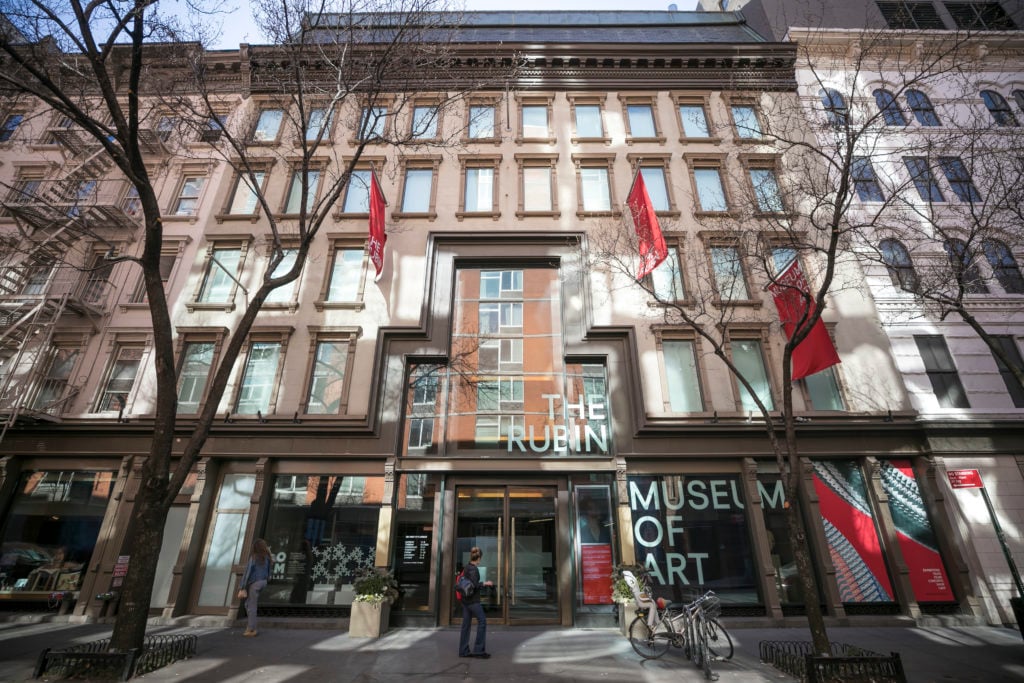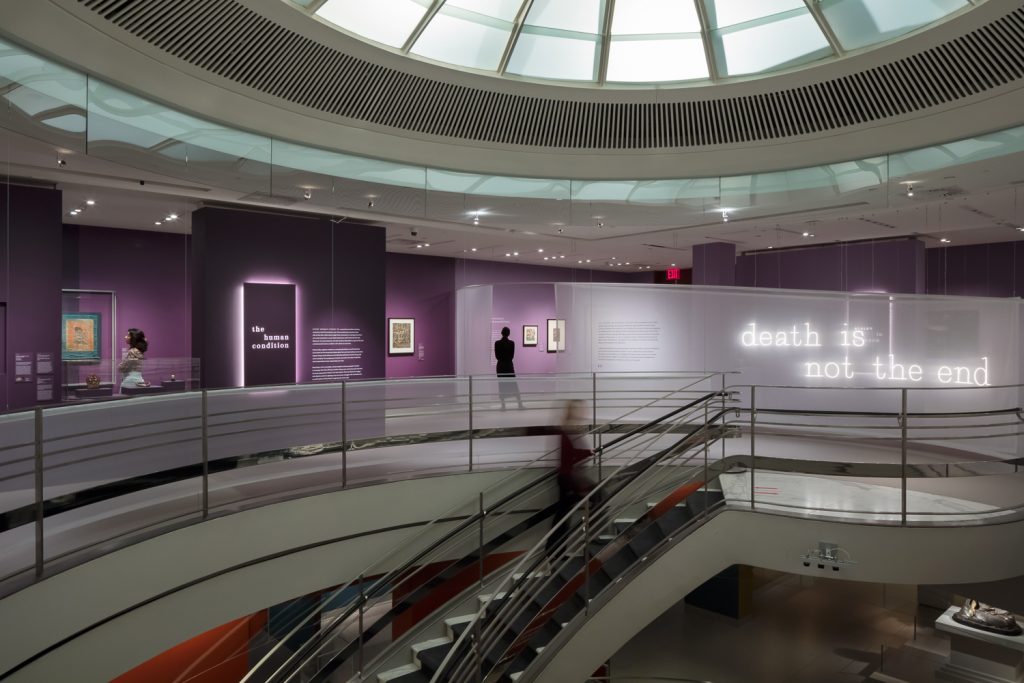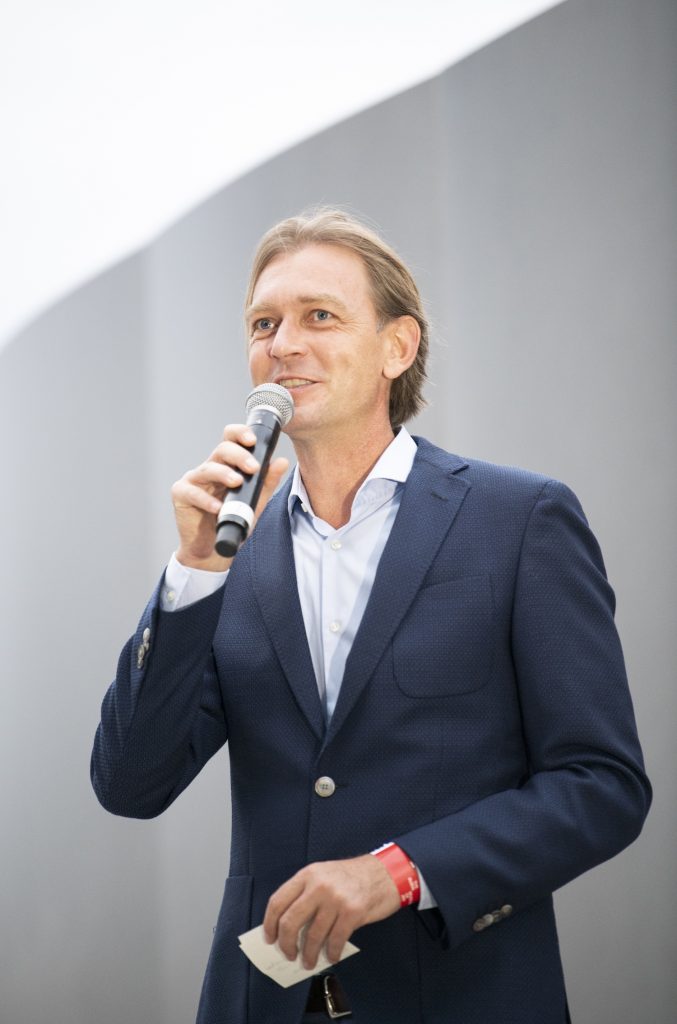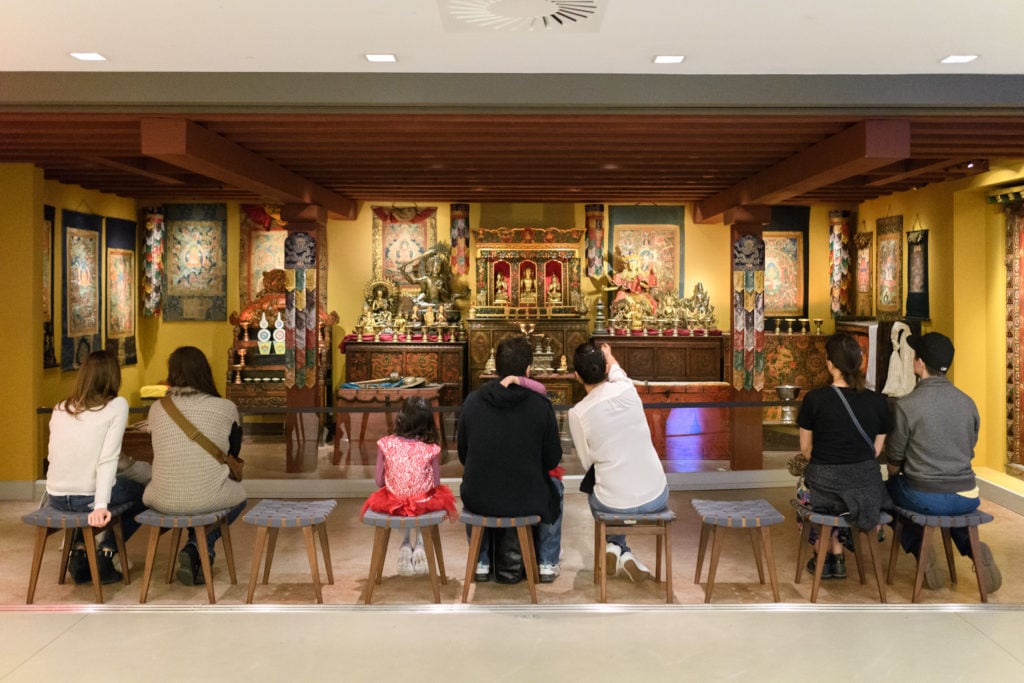Museums & Institutions
New York’s Rubin Museum Will Shutter Its Building and Transition to a Decentralized Model
The museum will reduce its 60-person staff by roughly 40 percent with the move.

The museum will reduce its 60-person staff by roughly 40 percent with the move.

Taylor Dafoe

This fall, the Rubin Museum of Art will shutter its longtime Manhattan home as it transitions to a new, decentralized model. The surprise move, which will see the institution dedicated to Himalayan art reinvent its operations, will result in a roughly 40 percent reduction to its 60-person staff.
Until now, the museum has been synonymous with its 70,000-square-foot building on 17th Street, purchased in 1998 by husband-and-wife collectors Donald and Shelley Rubin to show off their sprawling collection of South Asian art. A mix of temporary and permanent exhibitions have always filled the venue, but in recent years the Rubin has favored more interactive, family-friendly fare, such as its popular Tibetan Buddhist Shrine Room and its experiential Mandala Lab installation.
Moving forward, the museum will take on a new, itinerant identity—one geared toward institutional partnerships, traveling exhibitions, and an enhanced grant program.
“While it has been a privilege to welcome visitors to the Rubin in New York over the last 20 years, our anniversary inspired reflection on how we can achieve the greatest possible impact well into the future,” Shelley Rubin, now chair of the museum’s board, said in a prepared statement. “The result is the firm belief that a more expansive model will allow us to best serve our mission—not changing ‘why’ we share Himalayan art with the world, but ‘how’ we do it.”
“Realigning our resources will empower us to reach much broader and diverse audiences, prioritize accessibility, galvanize creativity, advance scholarship, and champion new modes of engagement in a fast-changing world,” added Noah Dorsky, president of the Rubin’s board. (Both Rubin and Dorsky declined to be interviewed for this article.)

Installation view of “Death Is Not the End,” at the Rubin Museum of Art, March 17, 2023 – January 14, 2024. Photo: David de Armas. Courtesy of the Rubin Museum of Art.
The Rubin Museum will close its doors for good on October 6, almost exactly 20 years after it first opened to the public in 2004. Eventually, the property will be sold, and the proceeds will be put toward the museum’s sustaining fund, which operates like an endowment and was estimated to be worth more than $150 million at the end of last year.
In an interview, Rubin director Jorrit Britschgi said the decision to announce the transition now, more than nine months before the official closure, was made to give impacted employees a long runway to figure out their next steps. “We’re trying to go about this as thoughtfully and as generously as we can, supporting colleagues who are not part of the future organization the best way we can,” he explained.
Staff members with roles related to the building, including those that work in admissions, operations, and the museum’s shop and cafe, are among those who will see their positions terminated in October. These outgoing employees will receive “comprehensive exit packages,” a spokesperson for the museum noted.

Rubin Museum Executive Director Jorrit Britschgi at the opening of the Mandala Lab, London on September 16, 2023. Photo by Ali Smith. Courtesy of the Rubin Museum of Art.
Today’s announcement punctuates the end of an up-and-down chapter for the Rubin. Over the last five years, the museum has faced waning visitor numbers, budget shortfalls, program cuts, and staff reductions. It’s been accused on multiple occasions of owning relics that were looted or otherwise unethically sourced, and was even featured in an episode of Last Week Tonight with John Oliver about the topic. But Britschgi was quick to push back against the idea that the museum’s forthcoming transition is a sign of failure. For him, the move is a forward-thinking step toward something new, not a reactionary fix to that which was not working in the past.
“When we think ‘museum’ today in the 21st century, why do we [assume] that it’s a space that we can walk into, look at objects, and get out again?” the director said, recalling a prompt that’s been on his mind in recent months. “How can we think about the museum in a bold manner, functioning very differently? It’s a choice that we’re making as an organization.”
Many of the challenges facing the Rubin are the same facing most museums today as they fight for relevancy in a rapidly changing cultural landscape. These challenges are not new, just newly urgent—exacerbated in recent years by the pandemic and economic downturns. Bigger institutions like the Museum of Modern Art are, to some extent, buttressed against these challenges by their world-class, broad-appeal collections, but the Rubin specializes in an old and relatively niche brand of art. Continuing to rely on traditional revenue streams like ticket sales and space rentals was simply not sustainable.

The Shrine Room in the Rubin Museum of Art. Photo: Filip Wolak.
Britschgi said that in considering this pivot, he and the board looked to other, more fluid cultural organizations for guidance. A particular source of inspiration was Chicago’s Terra Foundation for American Art, a grant-giving non-profit that was formed following the closure of the Terra Museum in 2004. And yet, while the Rubin plans to step up its own grant efforts with a new program in March, Britschgi notes one important distinction between his institution and the Terra.
“What I want to underline is that we are continuing as a museum. We will not operate our own space but the collection is very central to our efforts,” he said. The director explained that the Rubin will maintain a presence in New York, even after its building is sold, but securing long-term or permanent loans for pieces in its collection is the first priority.
As proof of concept, Britschgi points to recent Rubin efforts abroad, including its financial support for the inaugural Nepal pavilion at the 2022 Venice Biennale, and the Itumbaha Museum it helped establish in Kathmandu. (Activists protested the opening of the latter project because of the Rubin’s involvement.)
“By us not focusing most of our resources on one particular space… we have the ability to share what we stand for as an organization—creating awareness and sharing appreciation for Himalayan art—with a much more geographically diverse audience,” Britschgi said.